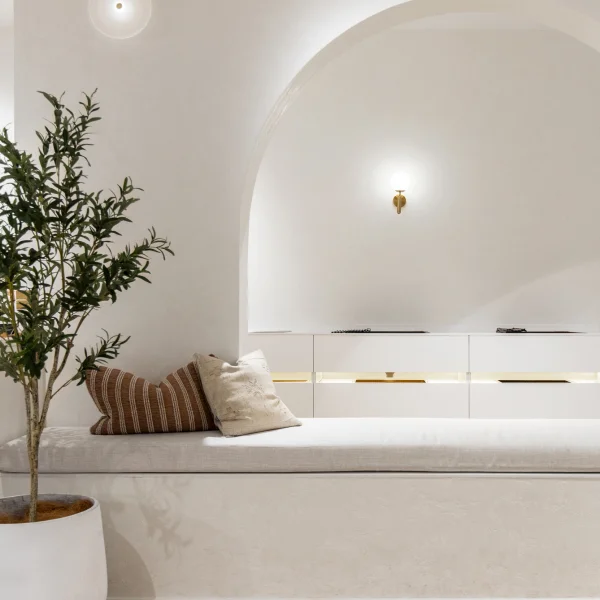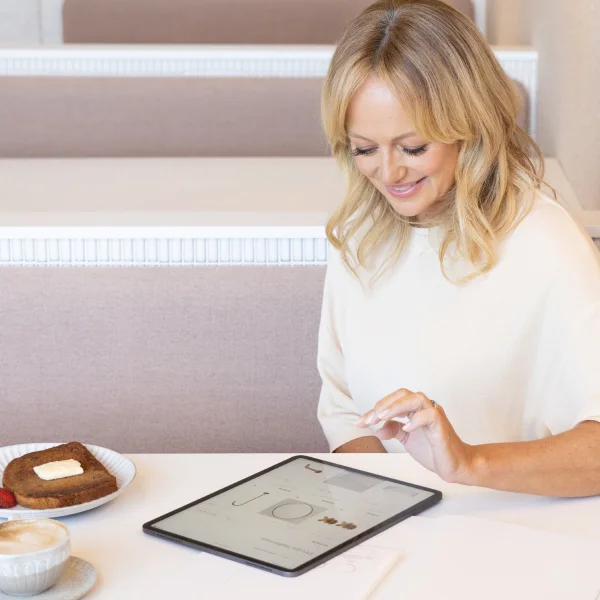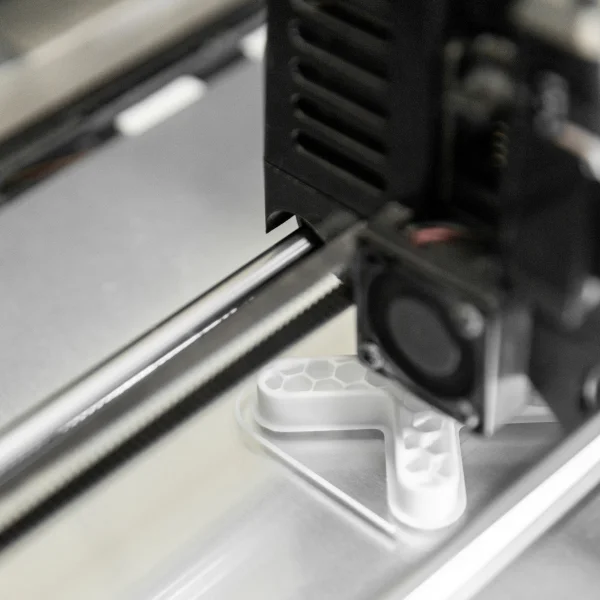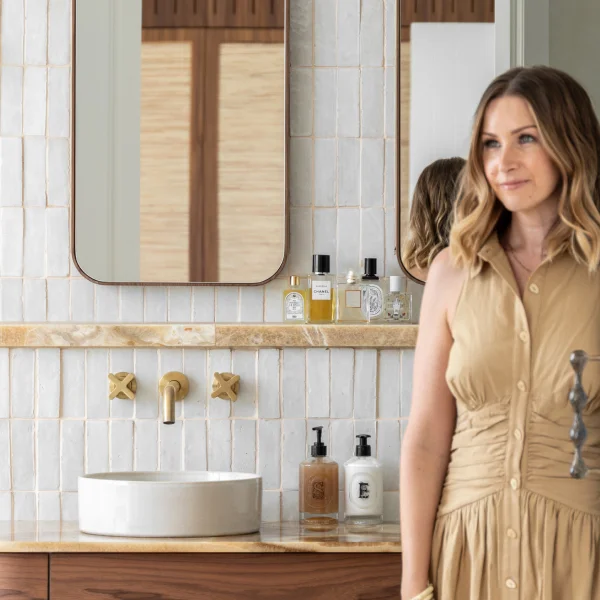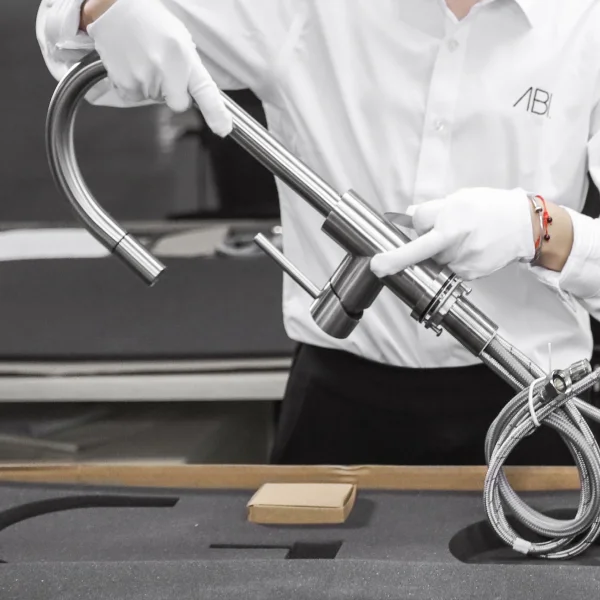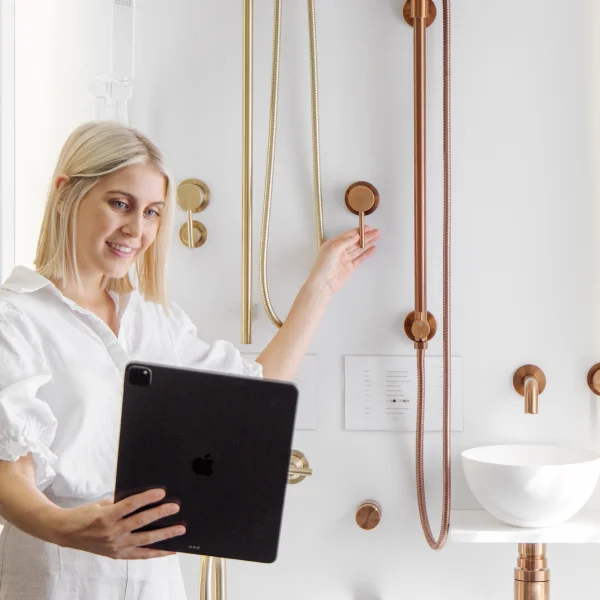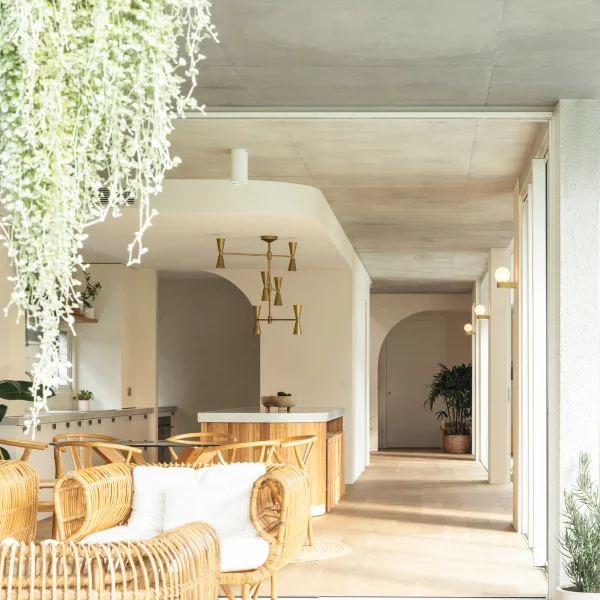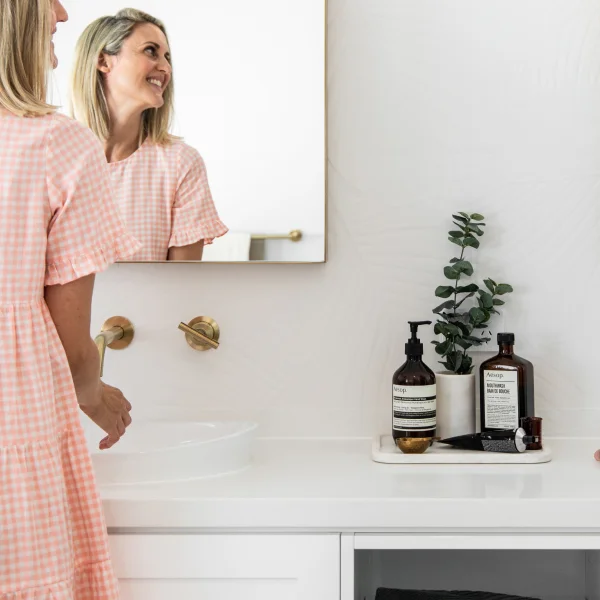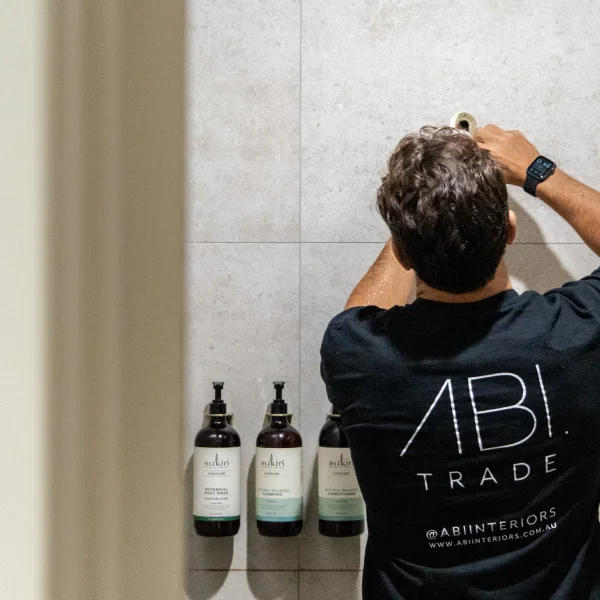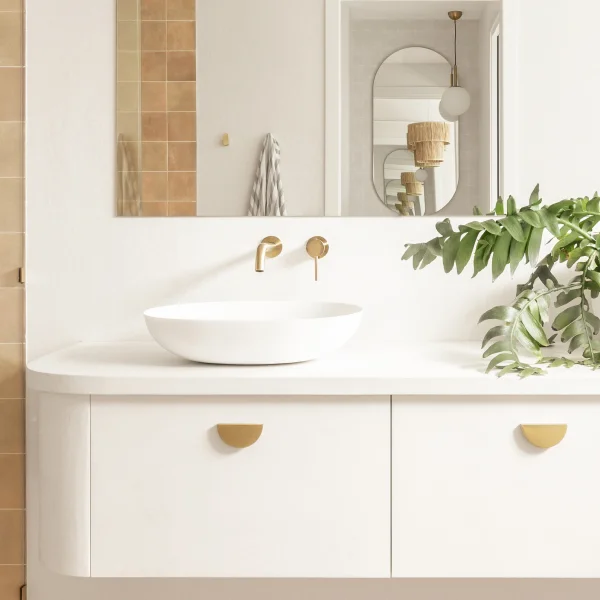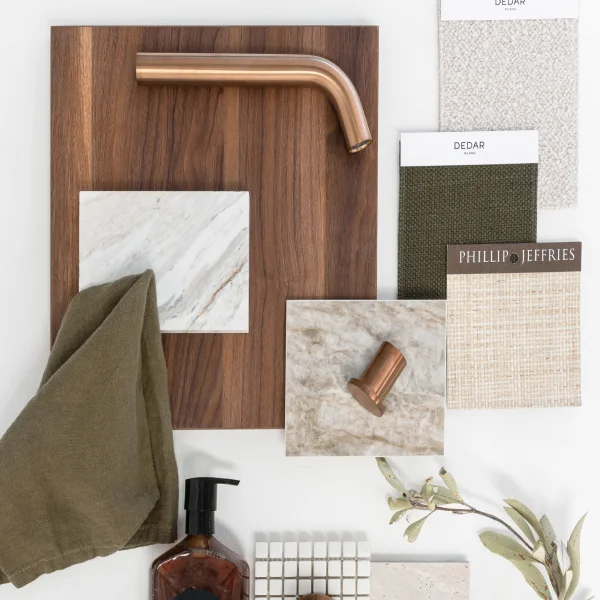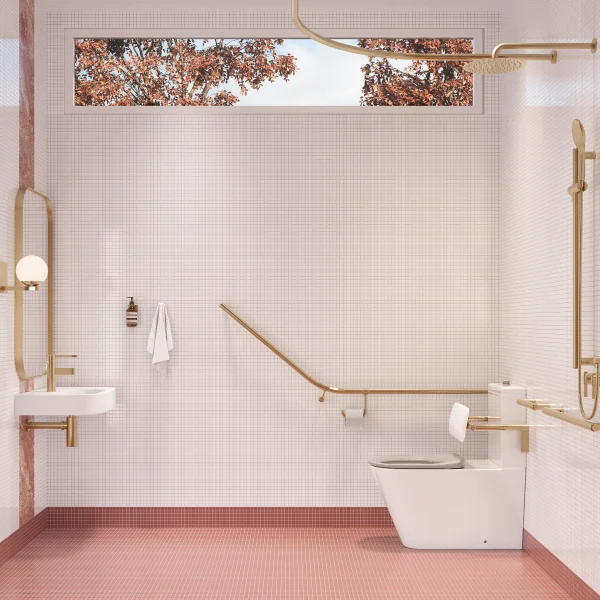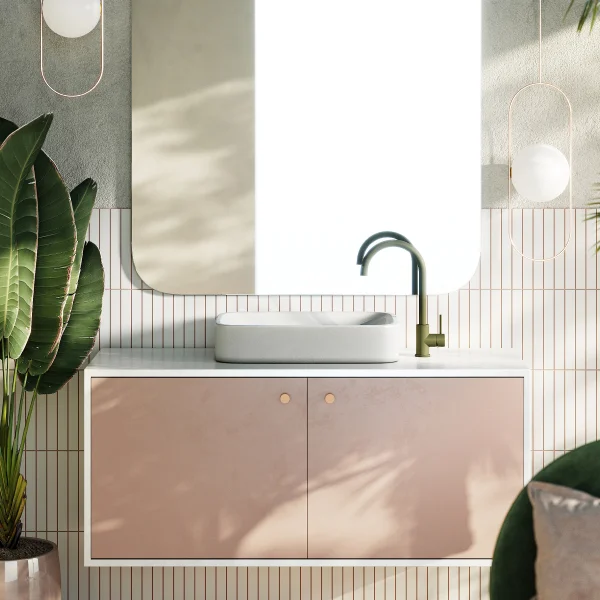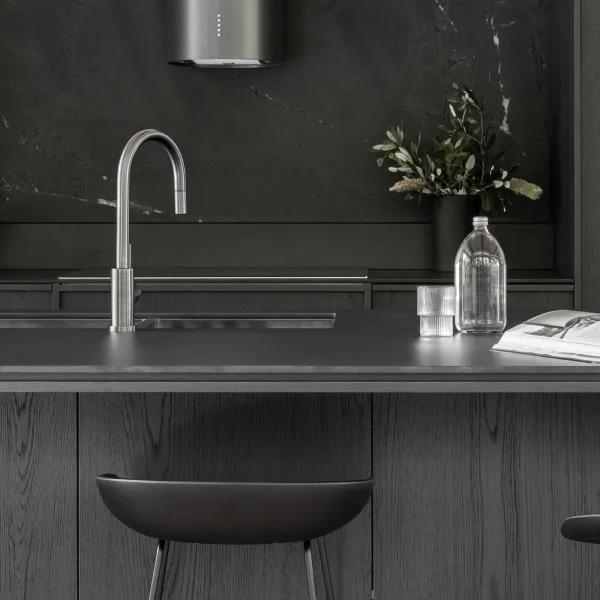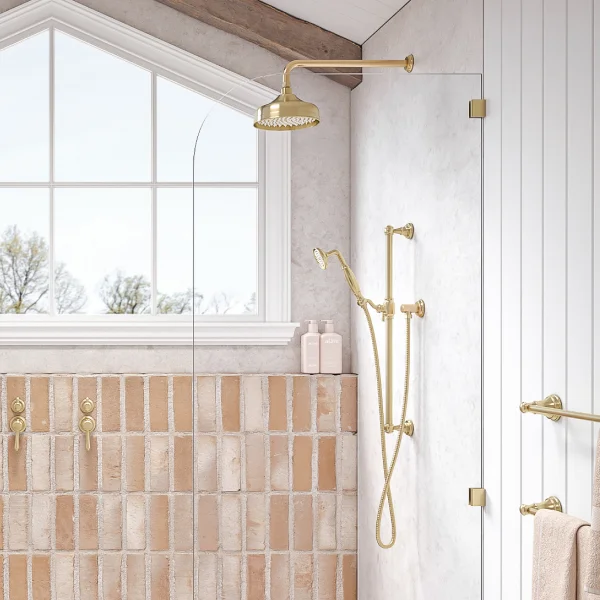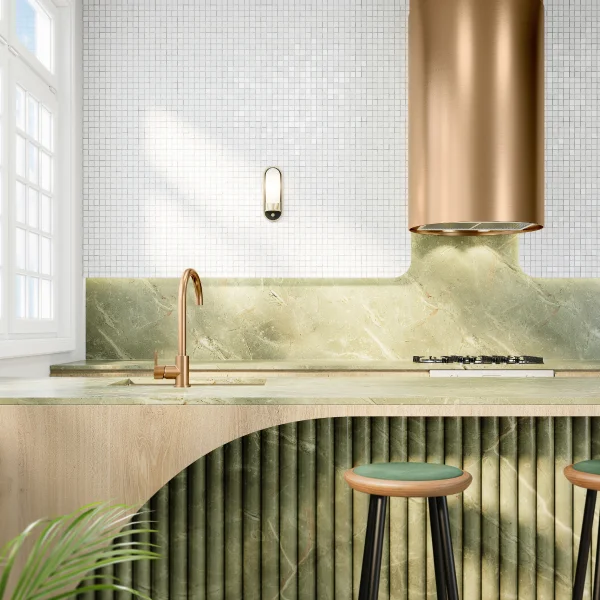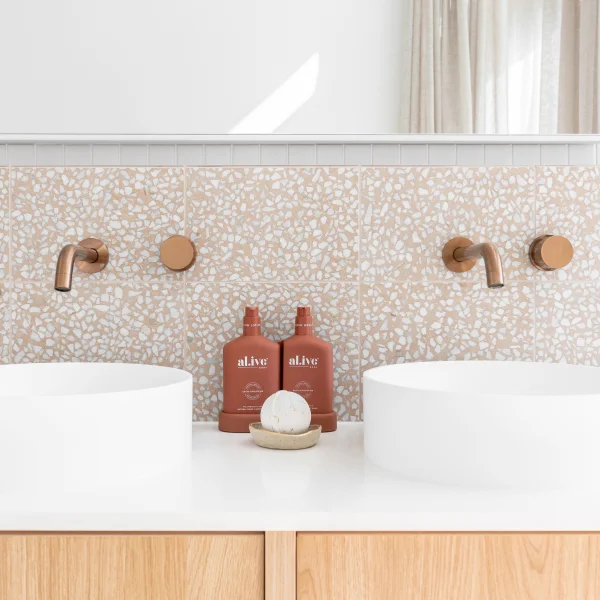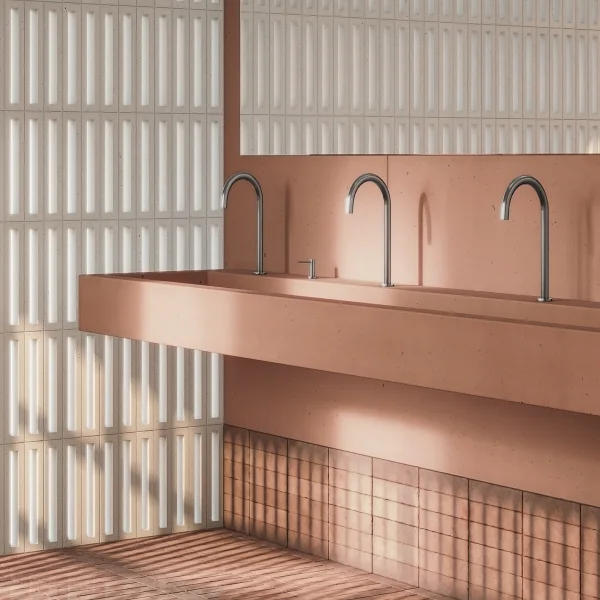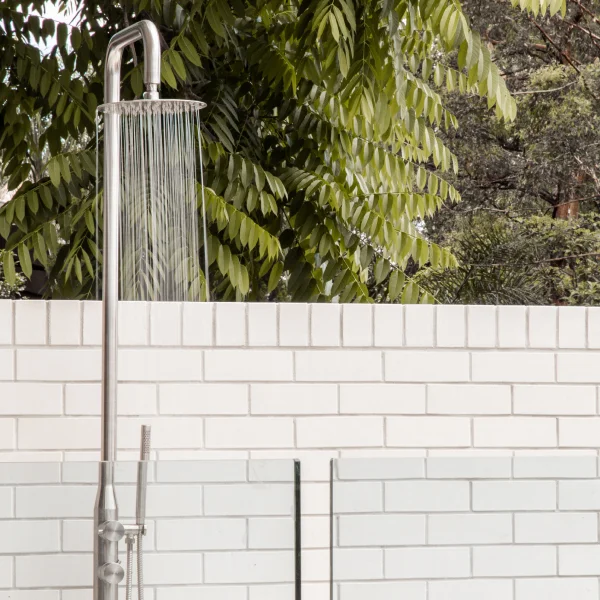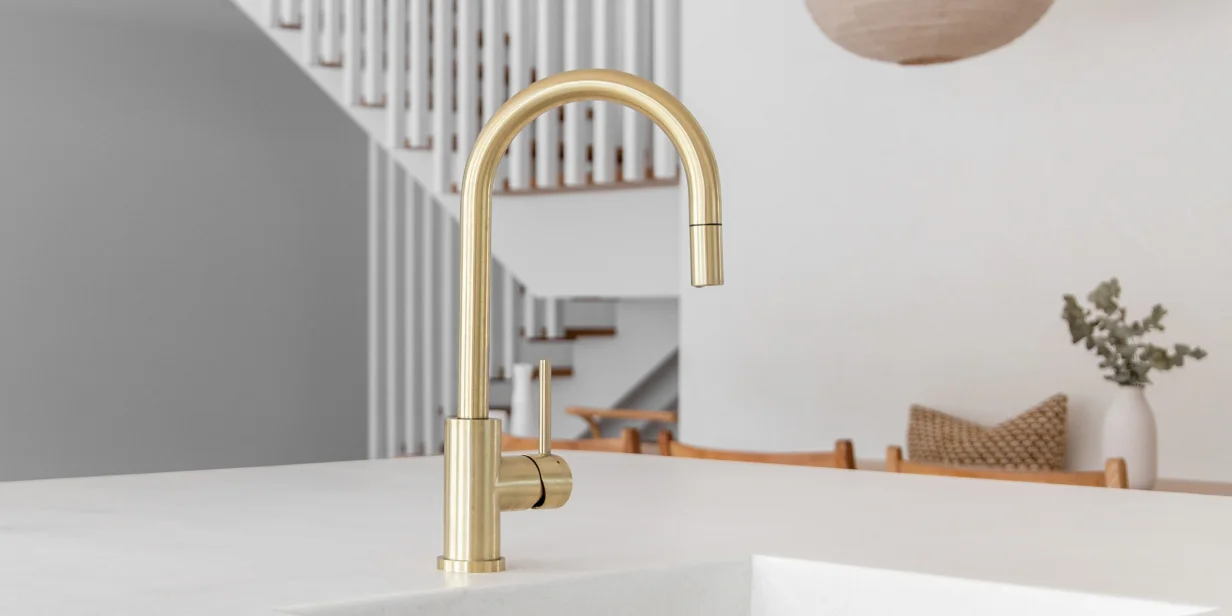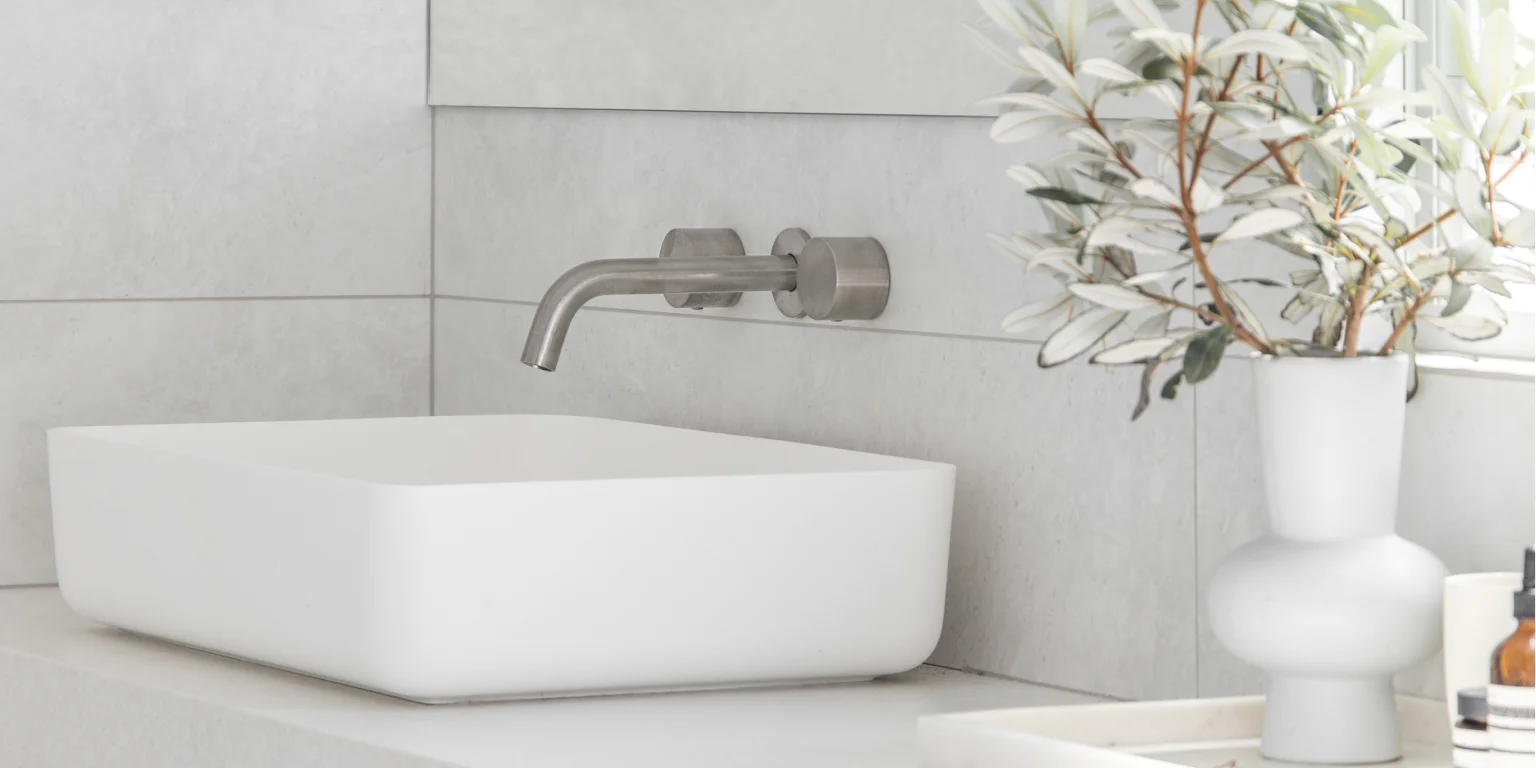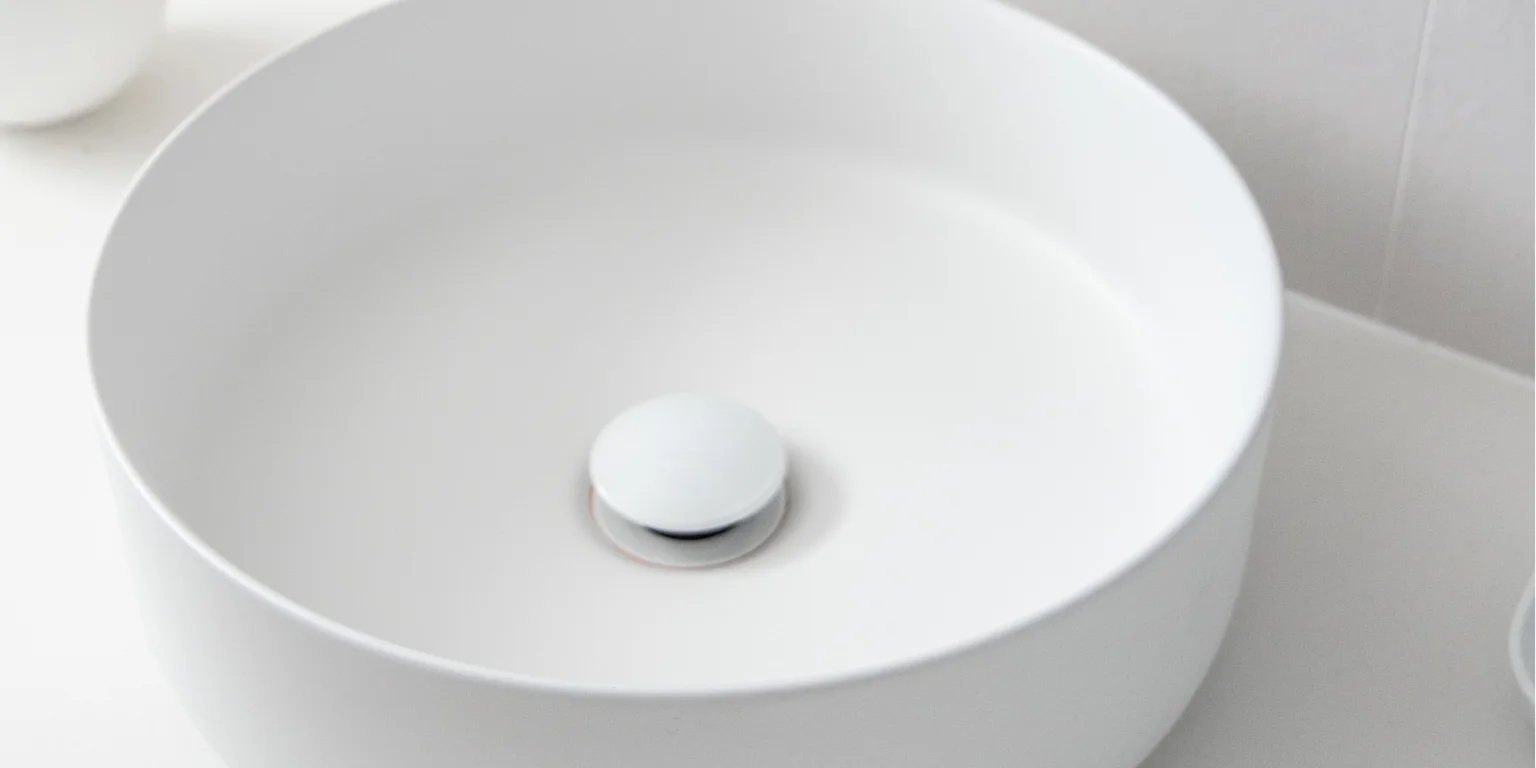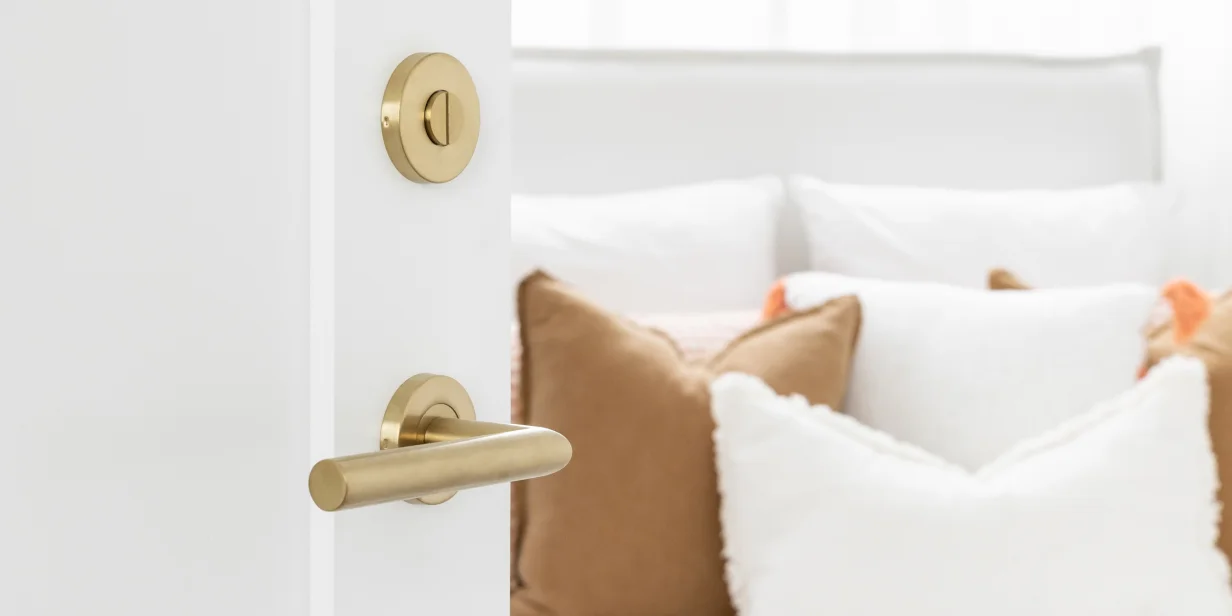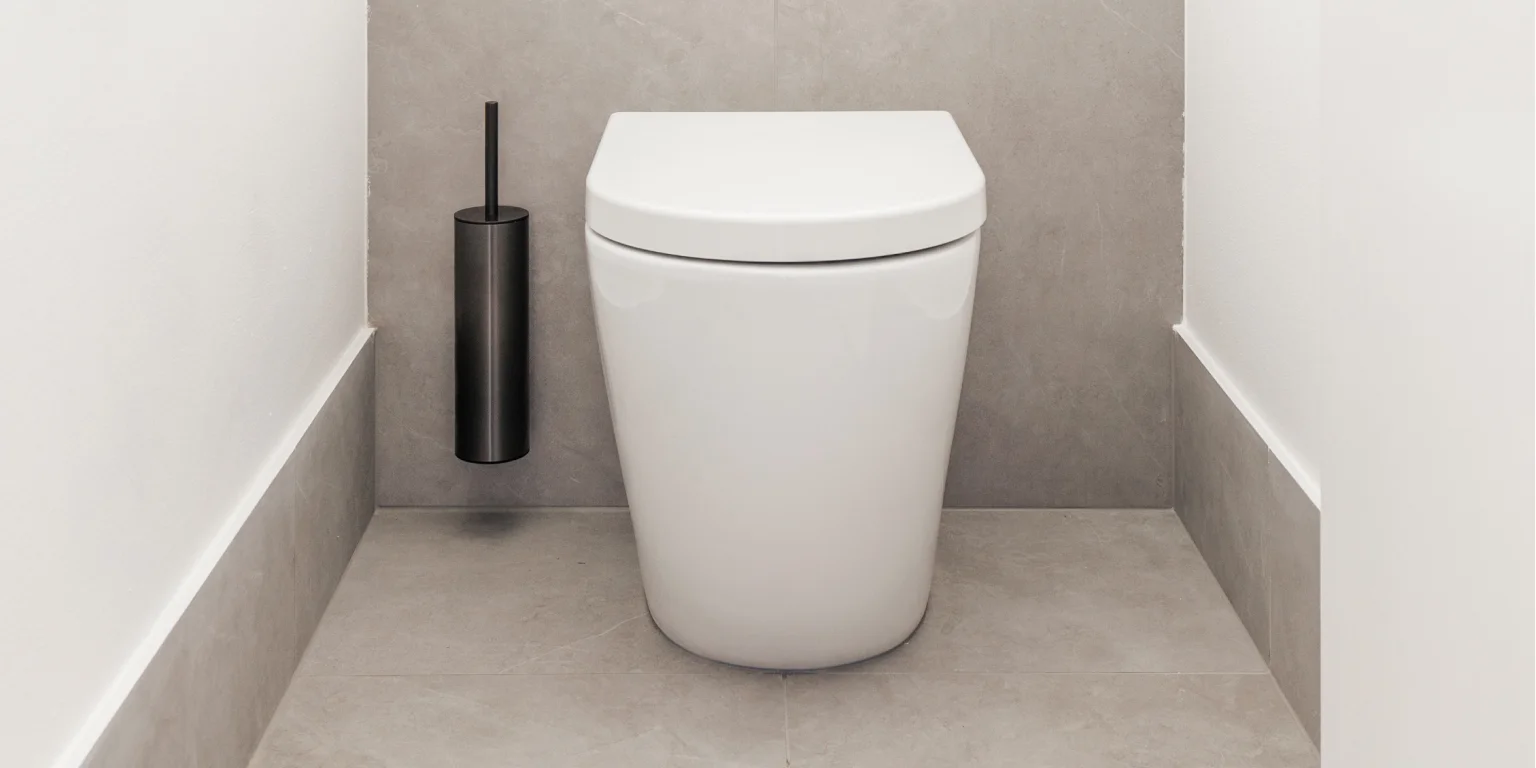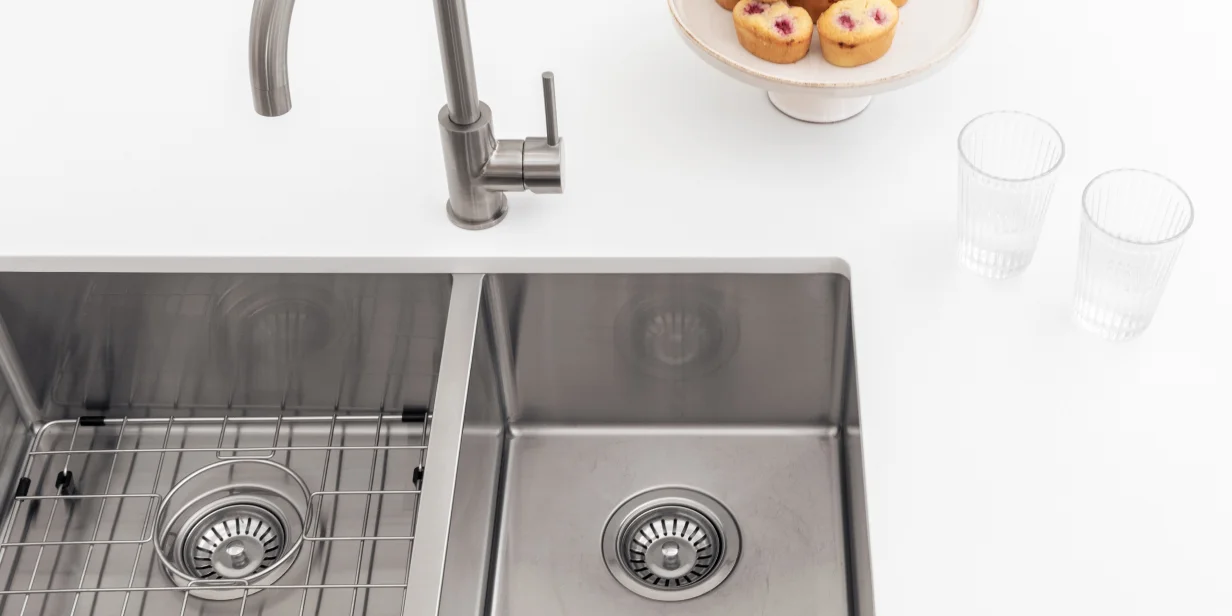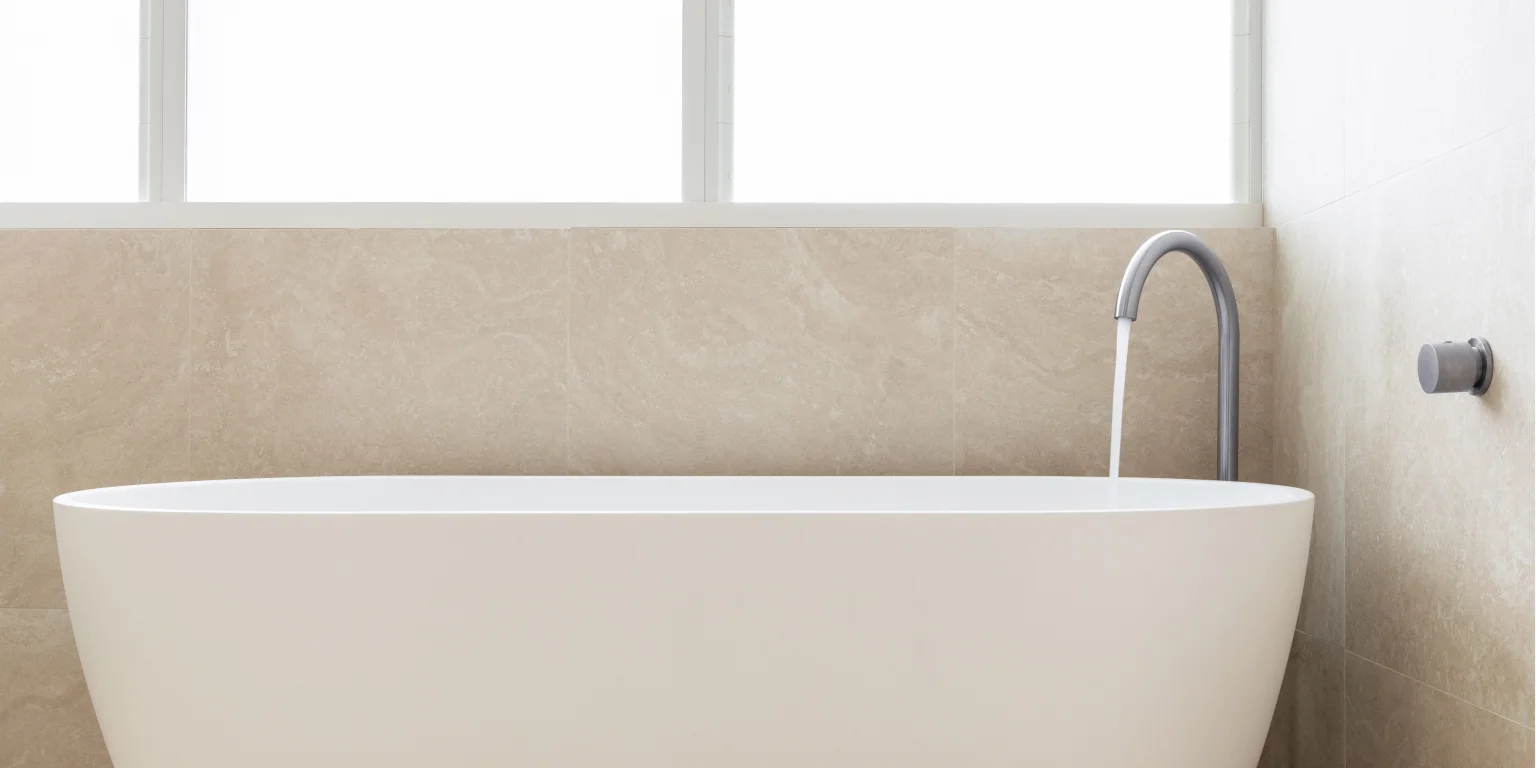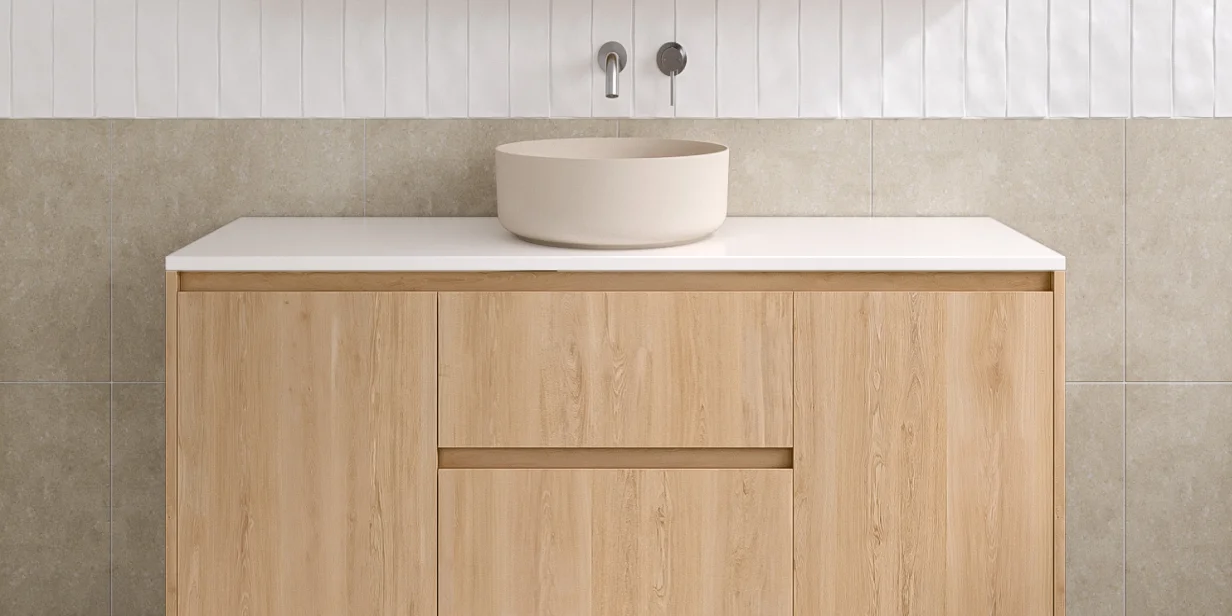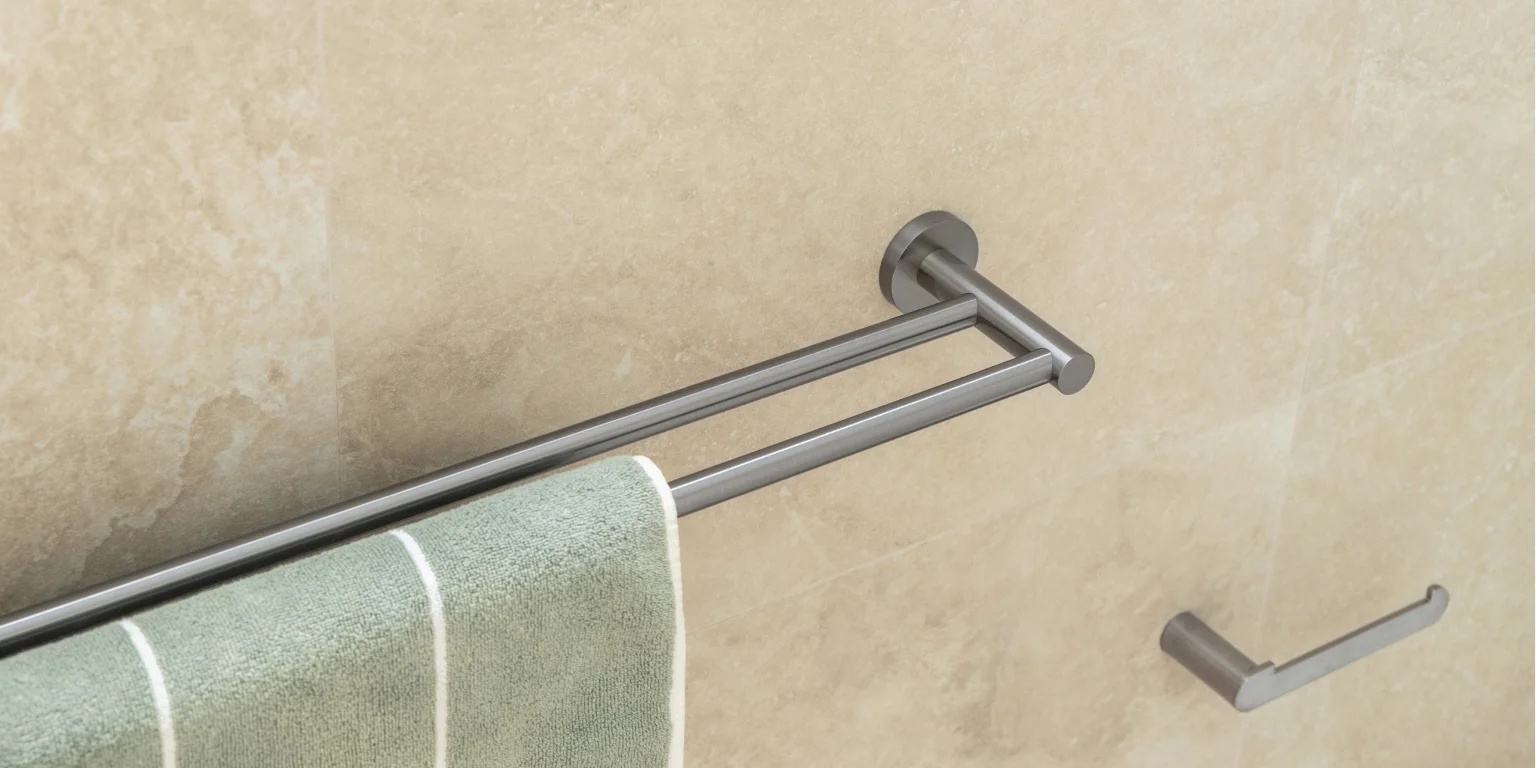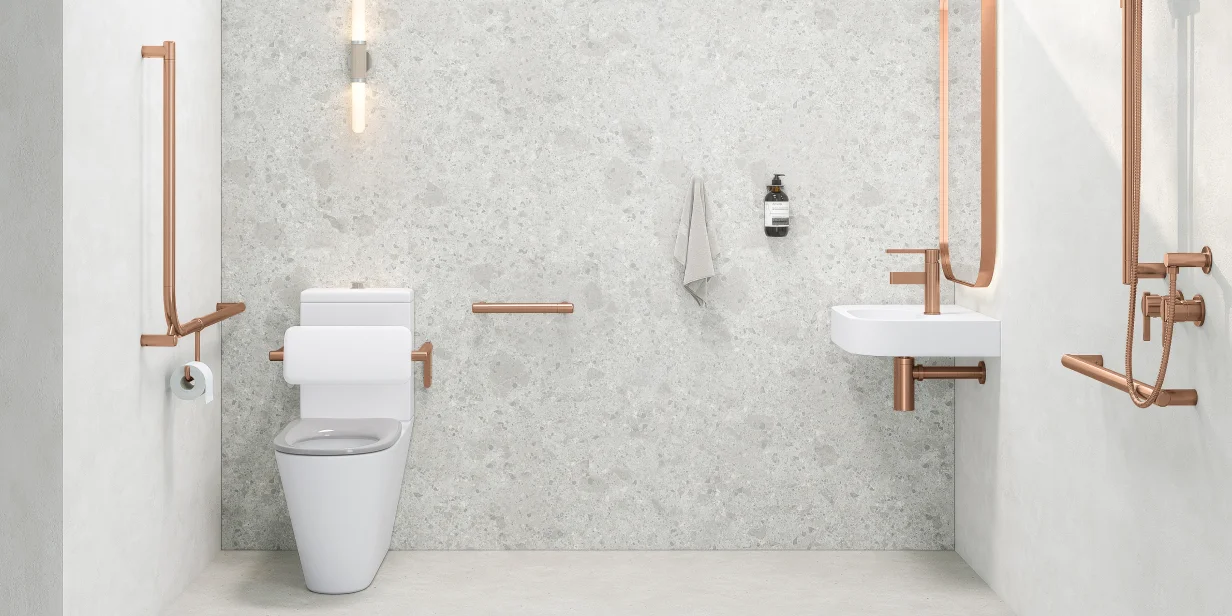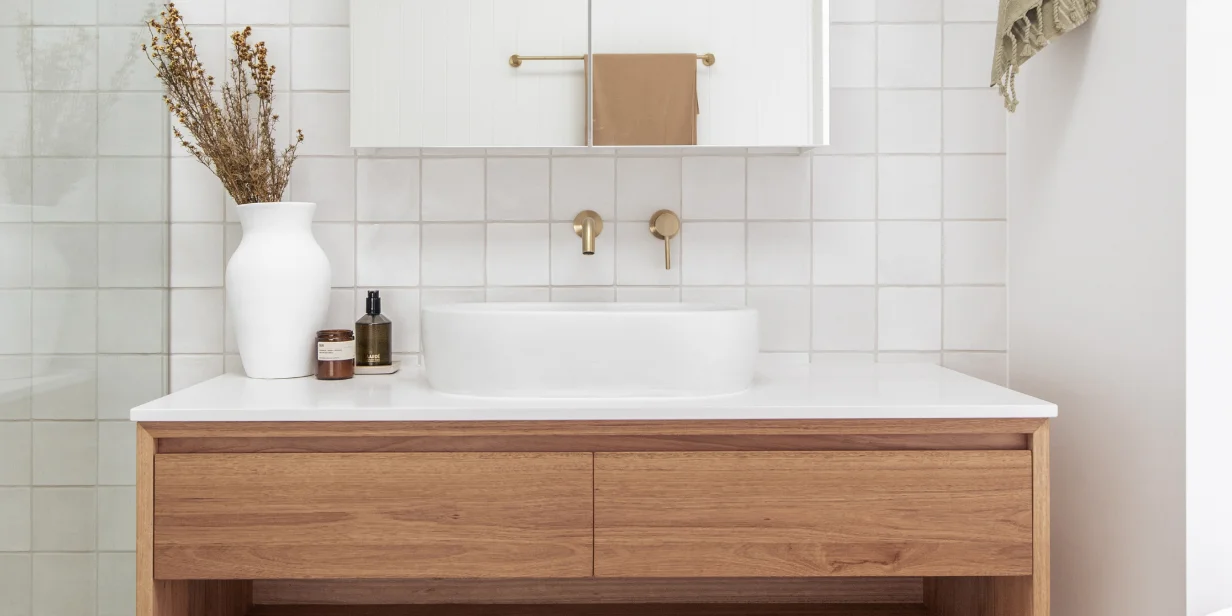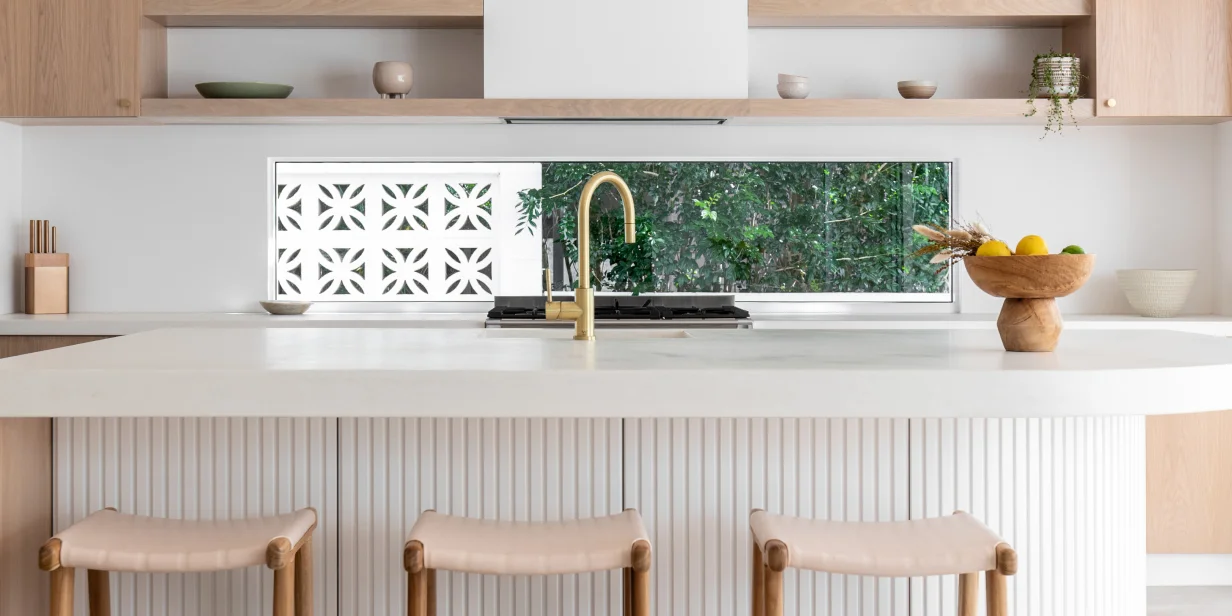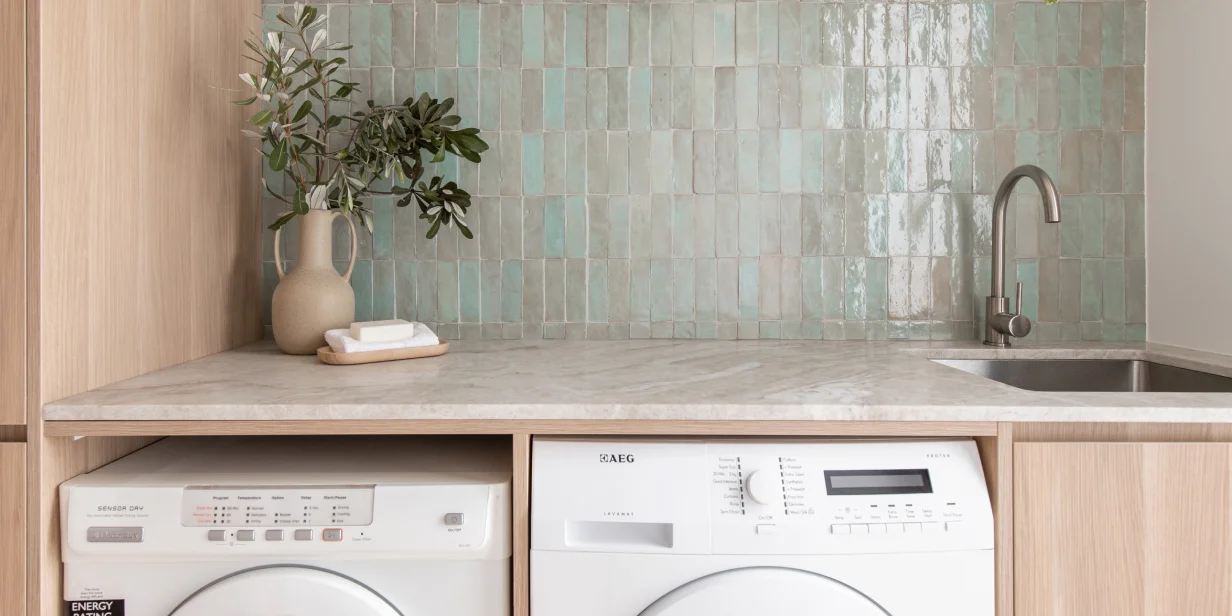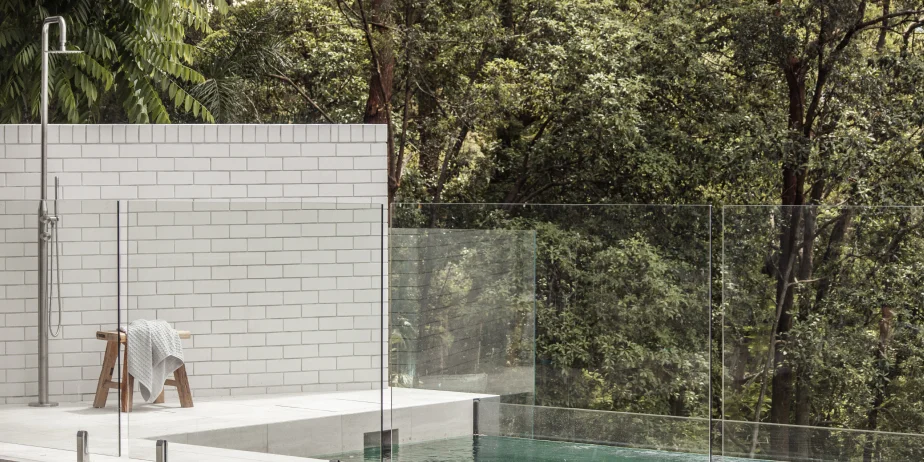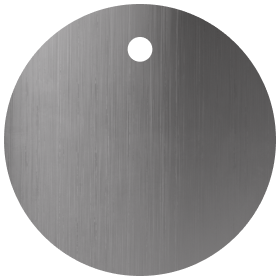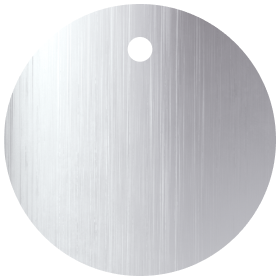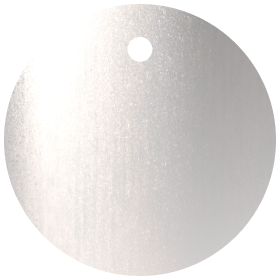Travertine: Everything You Need to Know
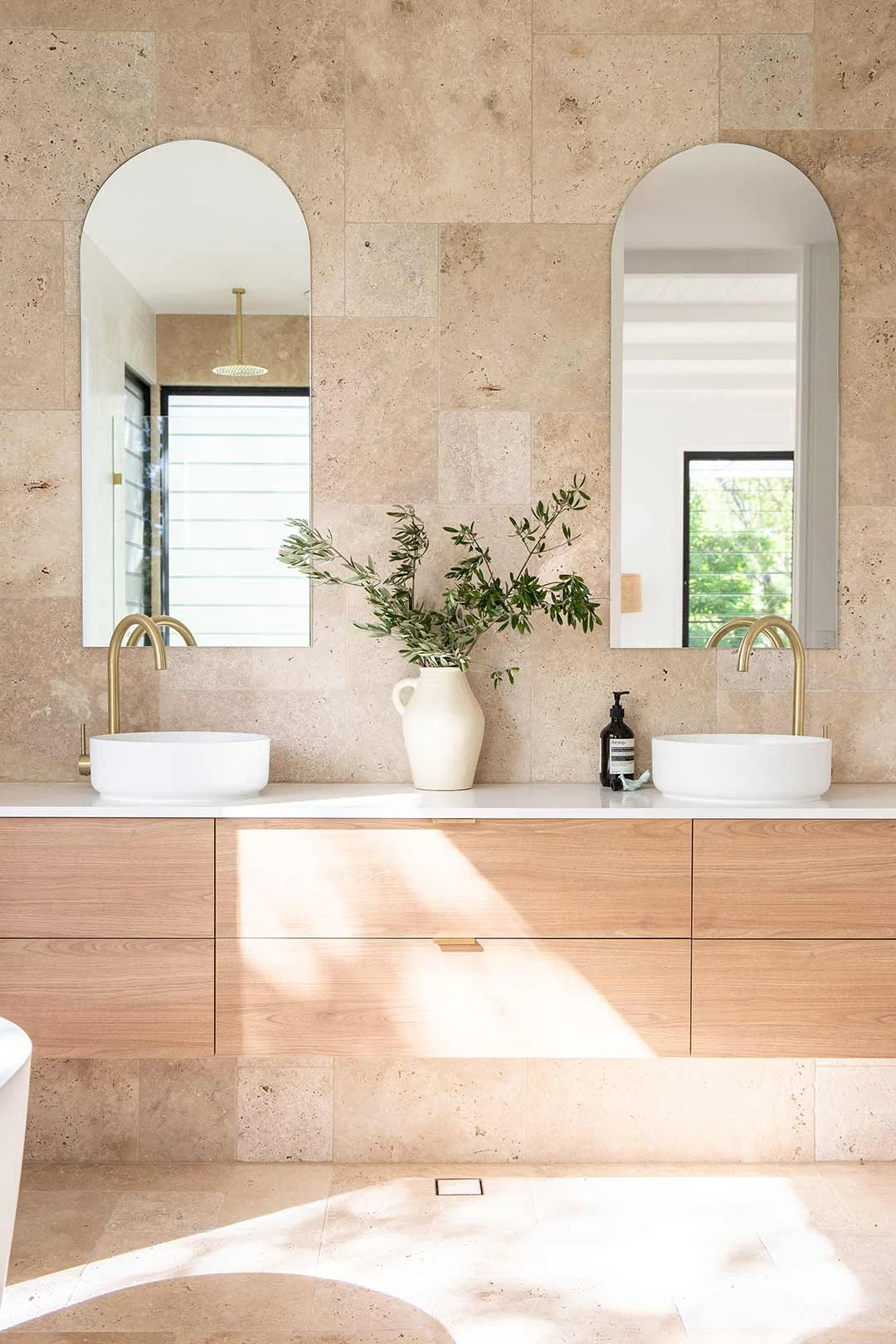
For many years, marble has reigned supreme — elevating kitchens, bathrooms, and home decor with its elegant, polished appeal. More recently, though, we’re seeing a more affordable, organic-looking stone start to take centre stage. With its porous texture and tonal patterns, travertine is the new stone to watch. From the bathroom to the backyard, we explore how to expertly interweave travertine throughout your home.
What is Travertine?
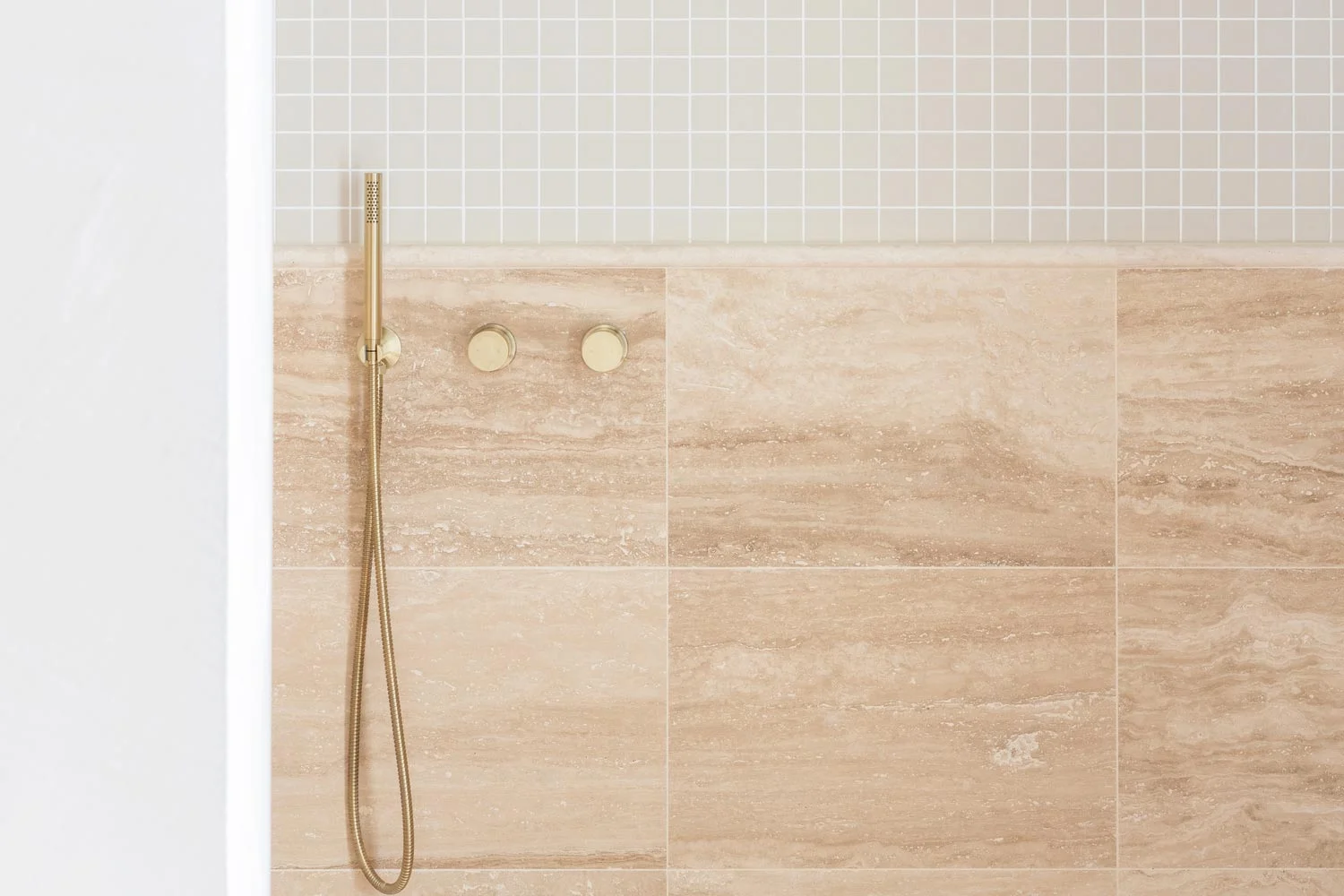
Traditionally found in the Mediterranean, travertine is a type of limestone deposited by mineral-rich hot springs. Its proximity to the hot springs causes water erosion on the stone, creating travertine’s signature porous texture — a fundamental part of its allure.
Travertine has been used as a building material for centuries — the Romans used it to build everything from amphitheatres to aqueducts, including the iconic Colosseum. Like any natural stone, it’s a durable material resistant to wear and tear and exposure to weather conditions — making it ideal for both indoor and outdoor use.
Is Travertine Marble?
Travertine is a type of limestone, as is marble — but they’re different because of how they’re formed. Marble is formed when limestone comes under intense pressures and high temperatures underground. Travertine, on the other hand, is formed by the evaporation of calcium-rich spring water in hot springs and limestone caves. Because of its highly porous nature, travertine is lighter than marble.
Depending on where the travertine is mined, its colour can range from the popular shades of beige, grey, and ivory to deep walnut, muted orange, pale green, and even rustic red. This variety makes it versatile enough to suit any interior scheme.
Types of Travertine
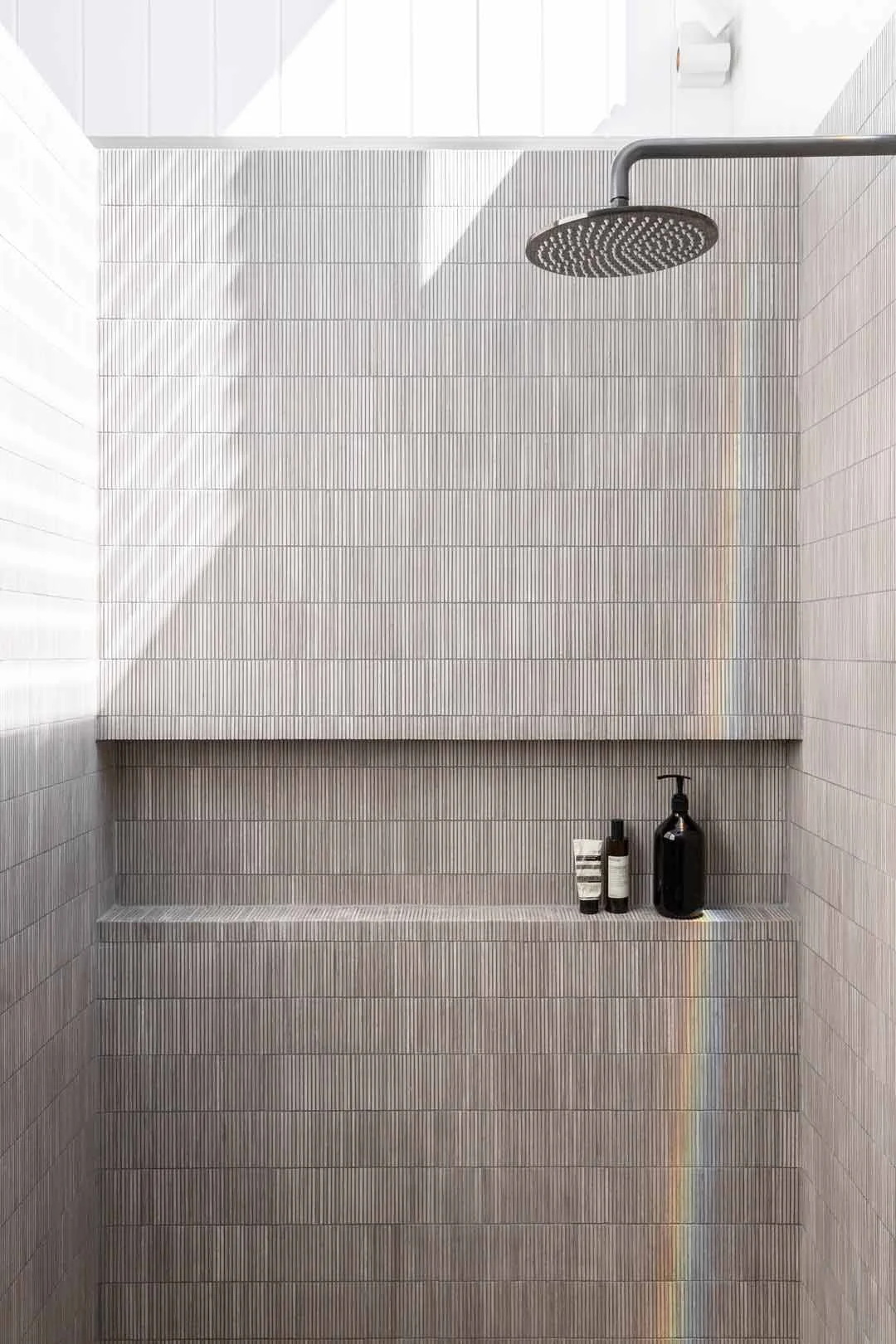
Travertine is found in locations across the globe, particularly in regions known for their geological activity and mineral-rich waters. Each location yields a different type of travertine, some of the most common types being:
Classic or White Travertine: Characterised by its creamy white to light beige colour, it often features subtle veins and colour variations. Common types include white Rapolano travertine, Iranian super white travertine, and alabastrino light travertine.
Silver or Grey Travertine: It features a light grey to silver colouring with darker grey veins and markings. Popular varieties include Rapolano silver travertine, Vesta travertine, and titanium travertine.
Gold or Yellow Travertine: Features warm, yellow hues with occasional brown and gold veins, adding richness to interior and exterior spaces. The most common types are Roman golden travertine, Persian yellow travertine, and Persian gold travertine.
Walnut Travertine: Includes earthy tones ranging from light brown and beige to deep walnut in colour, with subtle variations in pattern and texture for added depth.
Pink Travertine: Hints of pink and blush tones provide a warm, unrefined, natural aesthetic. Common types include Turkish pink travertine, scabas travertine, and Paglierino travertine.
Red Travertine: Ranging from light pink to deeper burgundy tones, red travertine is less common but can be found in regions such as Iran.
Scabas Travertine: Enriched with crystal deposits and characterised by its warm, rustic appearance and blend of colours, including beige, brown, gold, and red.
Travertine Finishes
Travertine is also available in four main finishes:
- Tumbled travertine: Its rounded edges contribute to its distinctive look; it looks more weathered and has more texture than the brushed travertine.
- Polished travertine: This glossy finish makes the travertine rich in colour and stain resistant, but it tends to be slippery when wet.
- Honed travertine: The most common finish for travertine flooring, it features a flat, polished surface with a smooth, matte finish.
- Brushed travertine: A wire brush is used to abrade the surface of the travertine to improve its texture.
Common Uses for Travertine
Travertine can be used in various spaces around the home thanks to its durability, functionality, and aesthetic appeal. It can be used for indoor applications ranging from kitchen countertops and splashbacks to accent walls and flooring. For outdoor spaces, travertine pavers or tiles can create inviting patios, pool decks, and more.
Travertine in the Kitchen
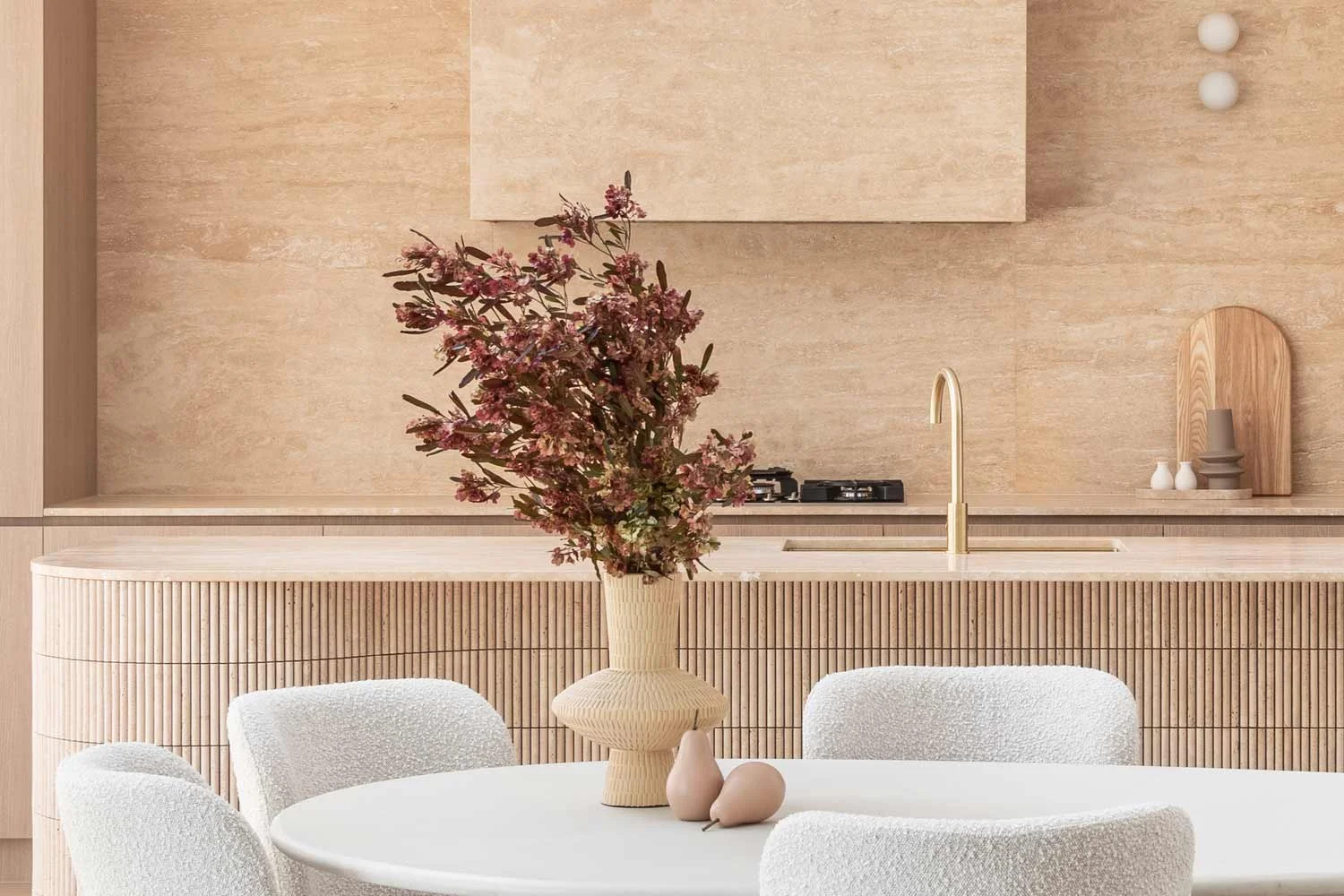
The natural patterns and earthy appeal of travertine create a unique and inviting atmosphere, bringing a sense of warmth and elegance to your kitchen. It offers a modern, textured look compared to more traditional materials like granite or quartz and is ideal for countertops, splashbacks, and flooring.
Travertine tiles come in a variety of colours and finishes, including polished, honed, brushed, and tumbled, allowing you to choose the perfect style for your kitchen. Keep in mind that it is a porous stone, so regular sealing is required to prevent staining.
Combine travertine with other materials like wood, metal, and glass to create a visually appealing contrast. For example, you could pair travertine countertops with wooden cabinetry and brushed copper or brushed brass tapware for a warm and inviting feel. Or, you could incorporate stainless steel or brushed gunmetal fixtures to add a modern, industrial touch.
Travertine in the Bathroom
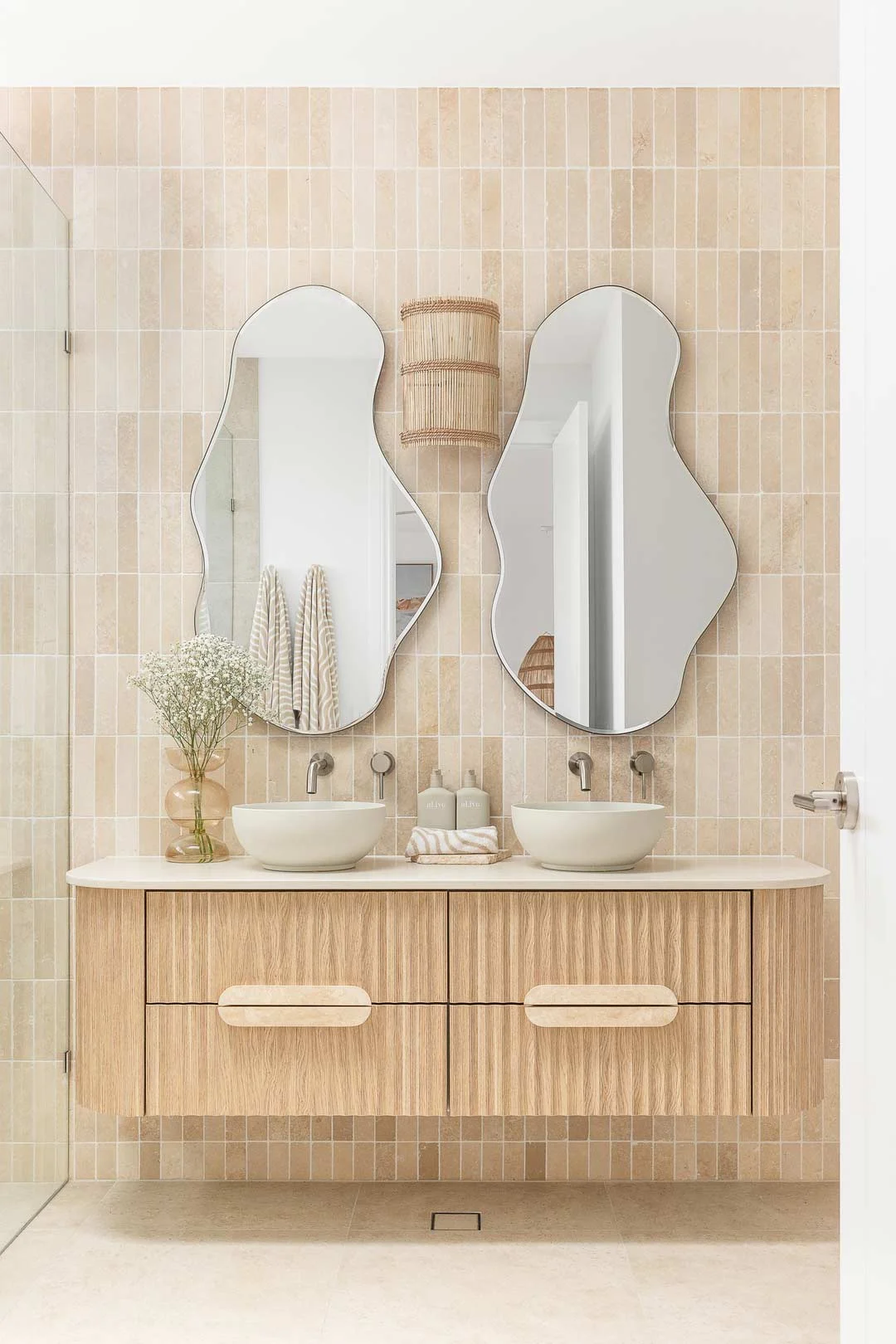
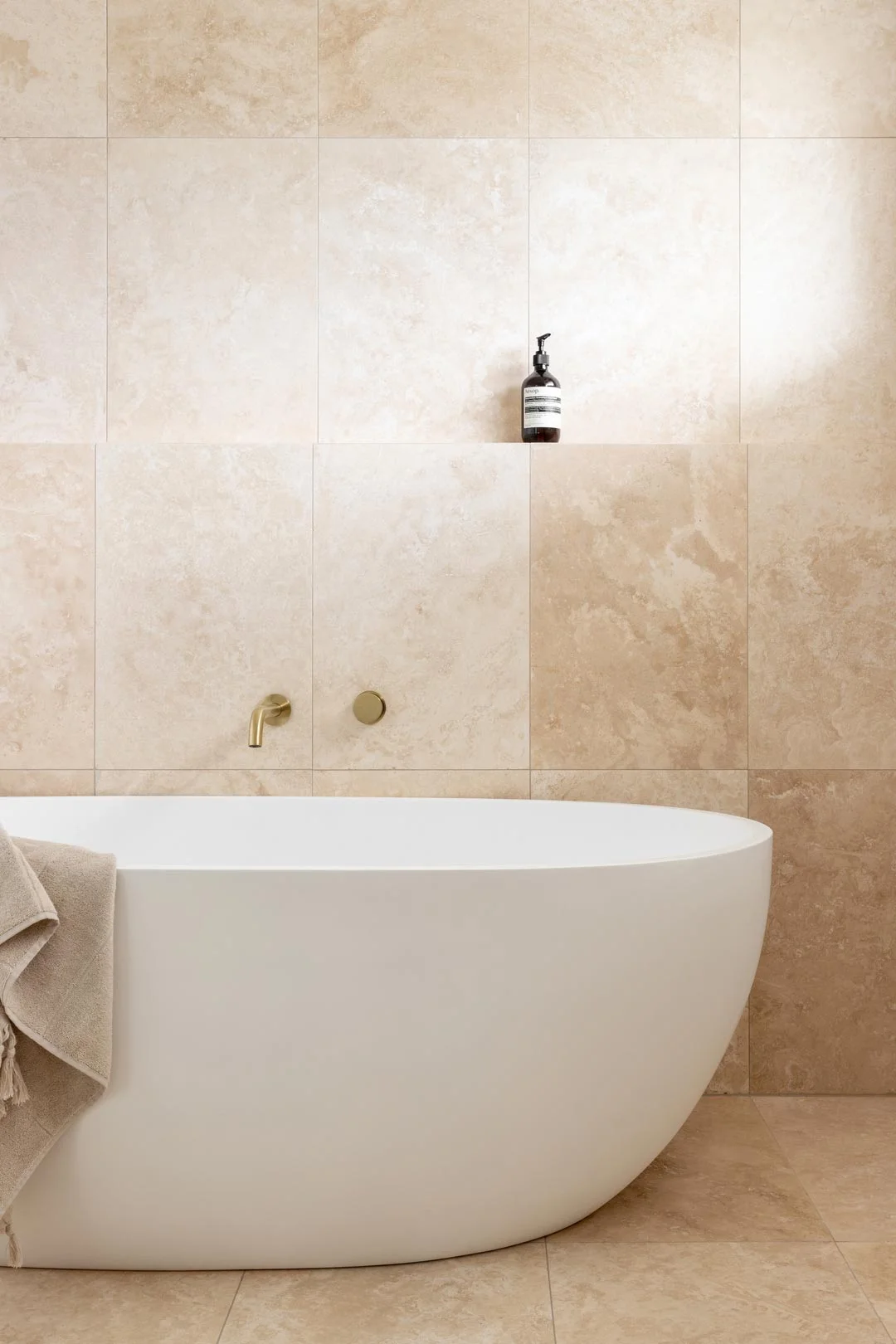
Imbue your bathroom with a spa-like ambience through the use of timeless travertine tiles. Its porous nature will add texture and depth to your space, providing a sophisticated backdrop for your decor. Its water-resistant properties and easy cleaning make it ideal for shower walls, vanities, and bathroom flooring. Consider using larger tiles for the floor to minimise grout lines and create a seamless look.
Travertine tiles can also create eye-catching accent walls, transforming a plain wall into a striking feature. Whether you prefer a polished or honed finish, a classic ivory or a rich walnut hue, the natural beauty of travertine can complement both traditional and contemporary bathroom schemes.
Travertine has subtle variations in colour and texture, so lighting can greatly influence its appearance. Experiment with different lighting fixtures and placements to highlight your travertine elements and create a relaxing atmosphere.
Using Travertine Outdoors
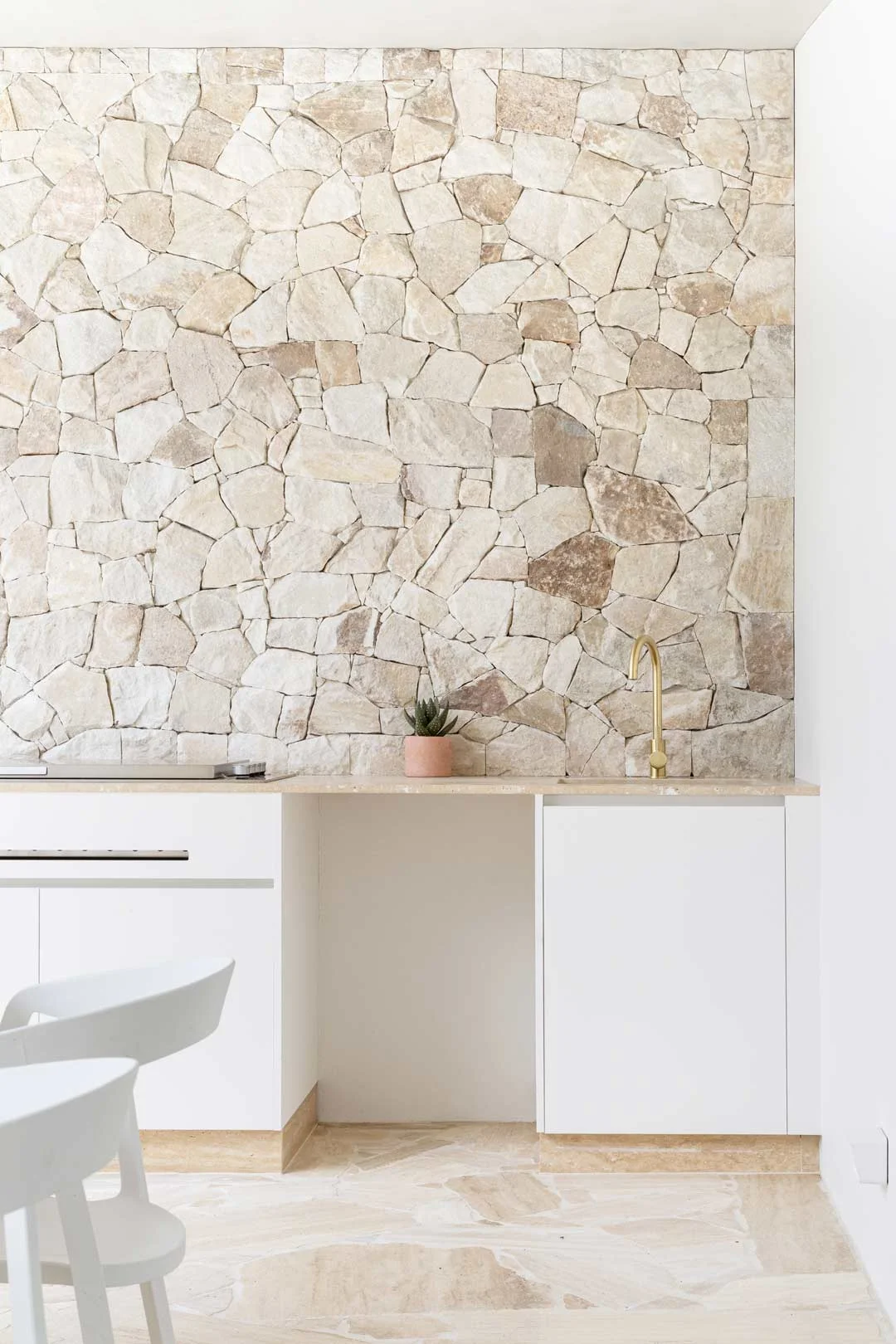
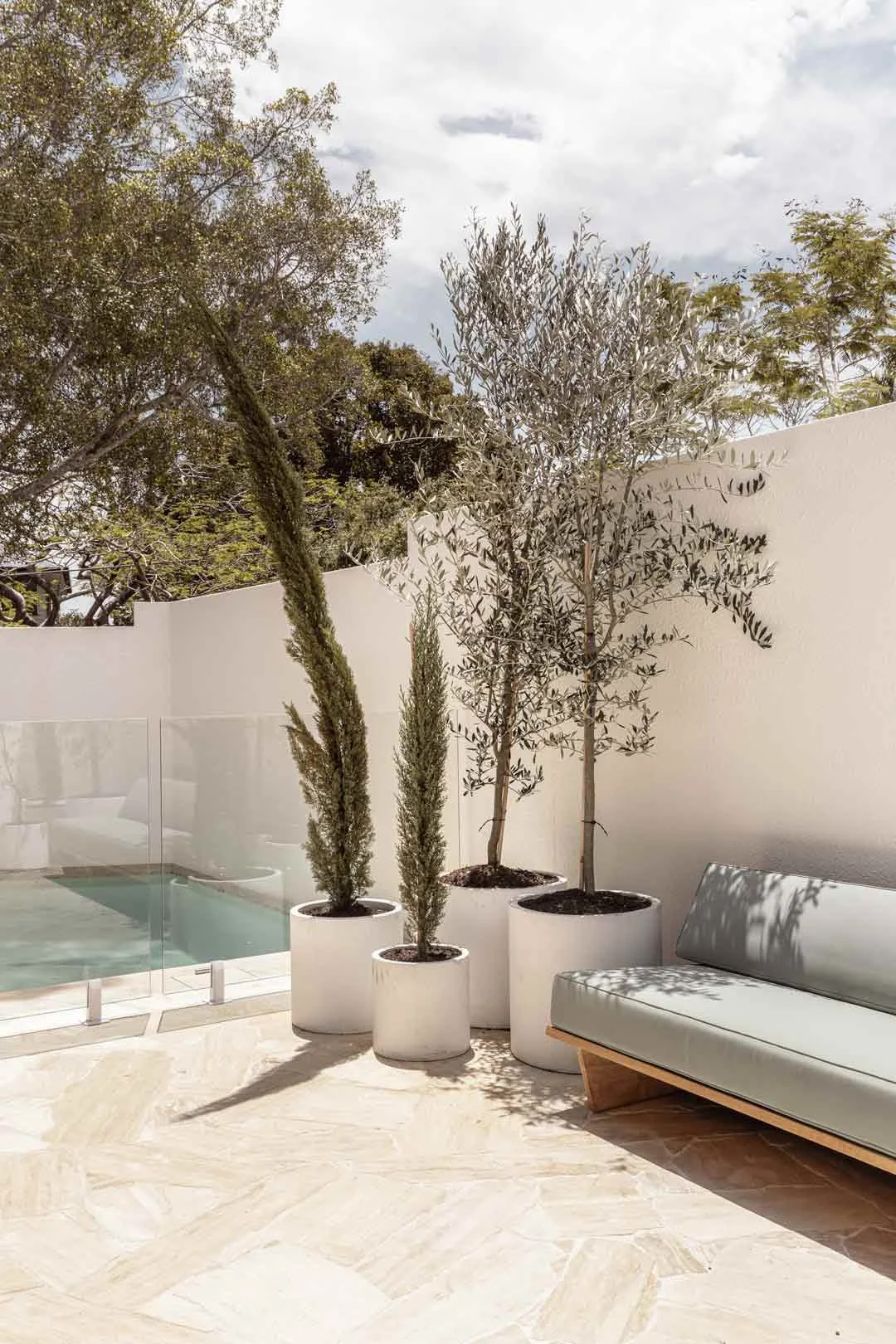
Travertine isn’t limited to indoor applications — it also works wonders for outdoor spaces. Whether you're designing a patio, pool deck, outdoor kitchen, or garden pathway, travertine can withstand weather conditions while maintaining its aesthetic appeal.
Its slip-resistant surface and ability to stay cool underfoot also make it a perfect choice for poolside areas. Travertine’s porous nature allows water to drain quickly, reducing the risk of puddling.
When using travertine pavers outdoors, it's essential to choose the proper finish for your specific application, as well as to properly seal and maintain the stone to ensure its longevity in outdoor environments.
Travertine Furniture and Decor
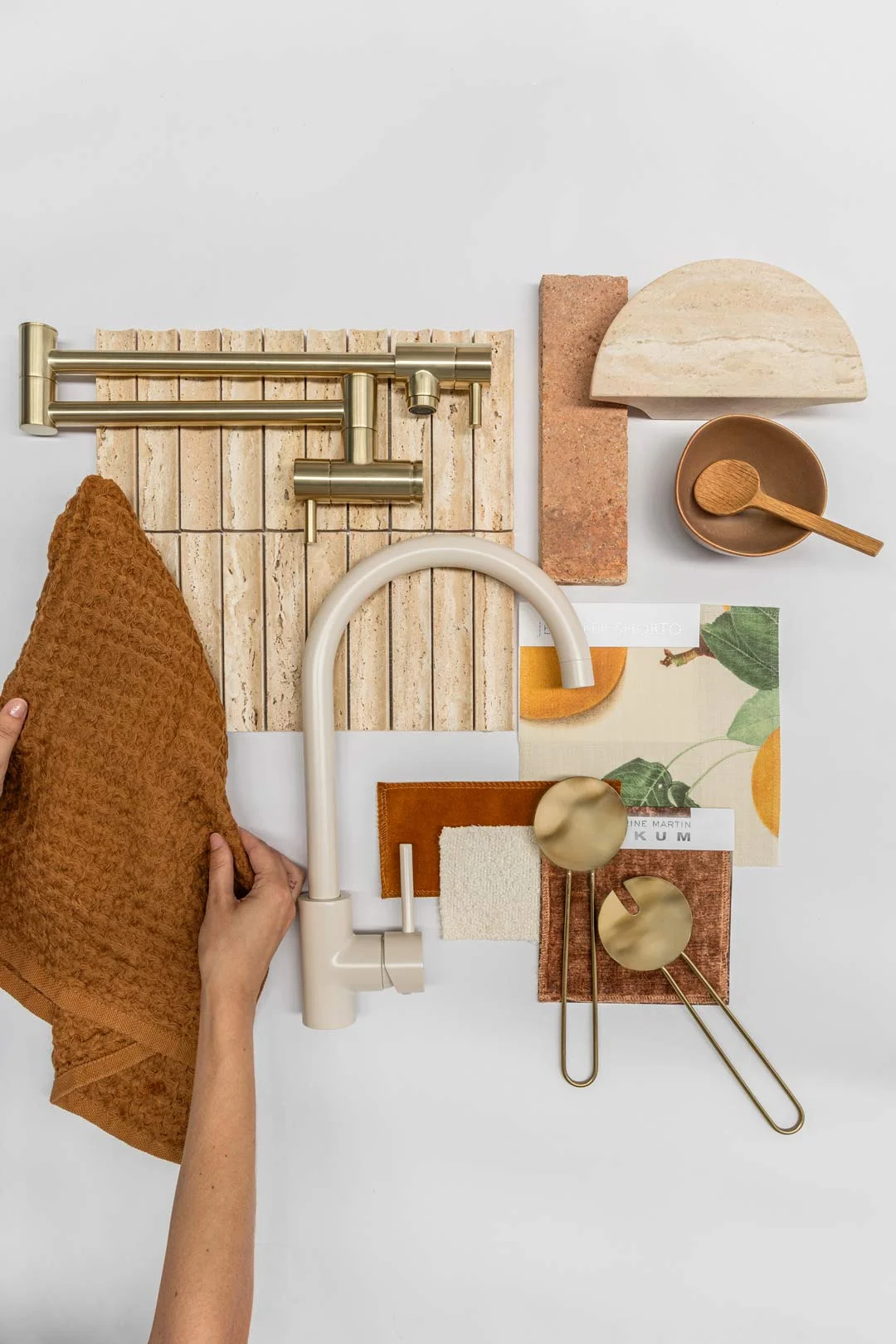

If you want to elevate a room without remodelling, incorporating travertine furniture and decor is a great place to start. This could include travertine furniture pieces like dining tables or chairs or decorative items such as vases, door handles, bowls, or candle holders. These subtle touches allow you to see how the stone suits your space before you use it in a larger capacity.
You could tie this in with travertine side tables in the bedroom, a travertine coffee table in the living room, or a travertine console table in the hallway. Whether you're looking for a functional piece of furniture or a decorative accent, travertine can be styled to suit both classic and contemporary interiors.
Travertine Care and Maintenance
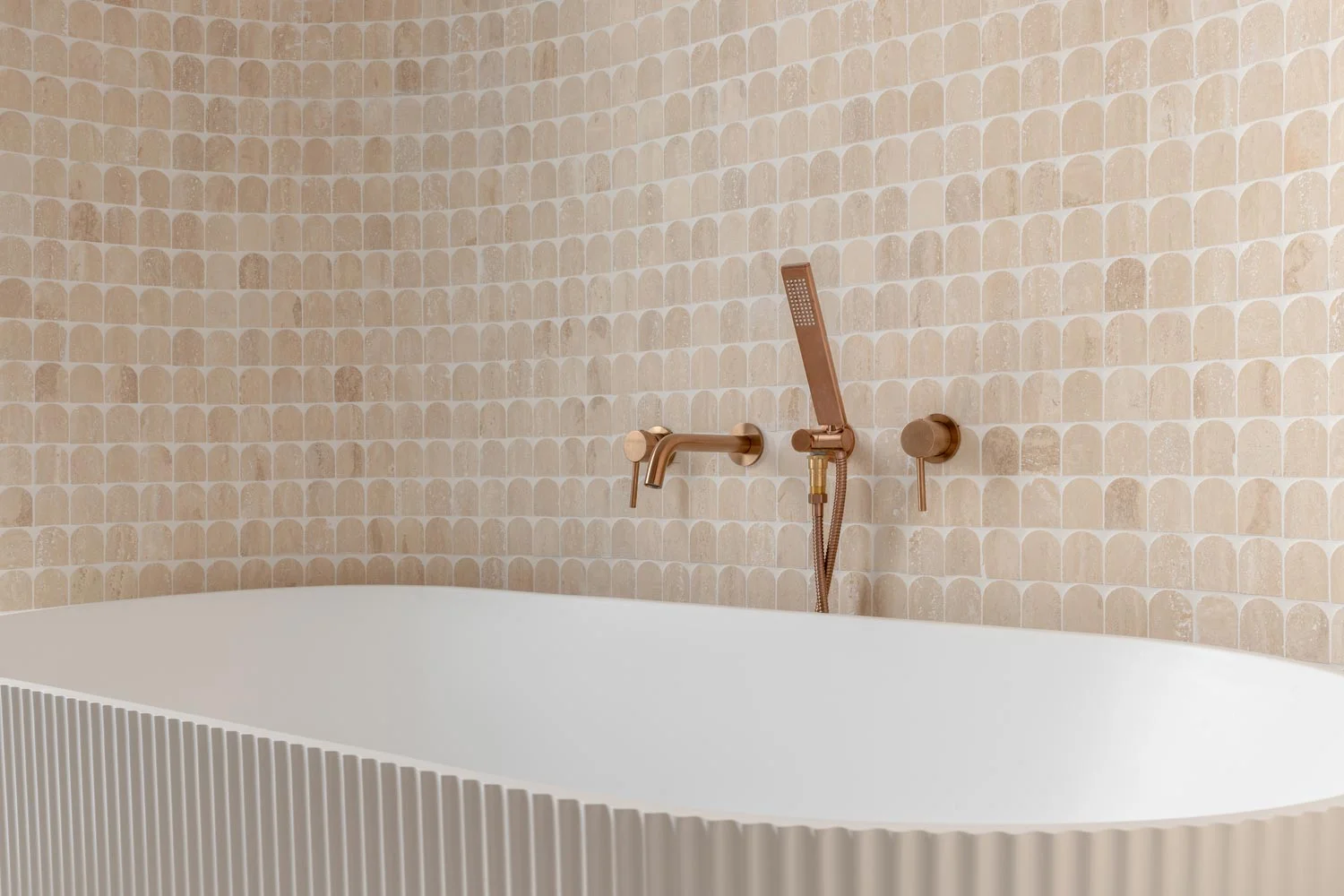
Travertine’s naturally porous texture, though part of its appeal, requires a careful approach to cleaning and care. Follow these simple guidelines to keep your stone looking fresh for years to come:
Sealing: It’s important to seal it regularly to protect it from staining and moisture damage. Use a high-quality penetrating sealer specifically designed for natural stone and follow the manufacturer's instructions. Travertine typically requires sealing every 1-2 years for interior applications and more frequently for outdoor areas or high-use surfaces.
Cleaning: Clean travertine regularly to remove dirt, dust, and spills that can stain or dull the surface. Use a pH-neutral stone cleaner or a mild dish soap diluted in warm water. Gently wipe the surface with a soft cloth or sponge, then rinse thoroughly with clean water and dry with a soft towel to prevent water spots. Steer clear of cleaning products that include bleach, ammonia, vinegar, or citrus, as they will erode the stone's surface and degrade the sealant. If you need to remove tough stains, use a specialised stone cleaner formulated for travertine and follow the manufacturer's instructions carefully.
Pros and Cons of Travertine
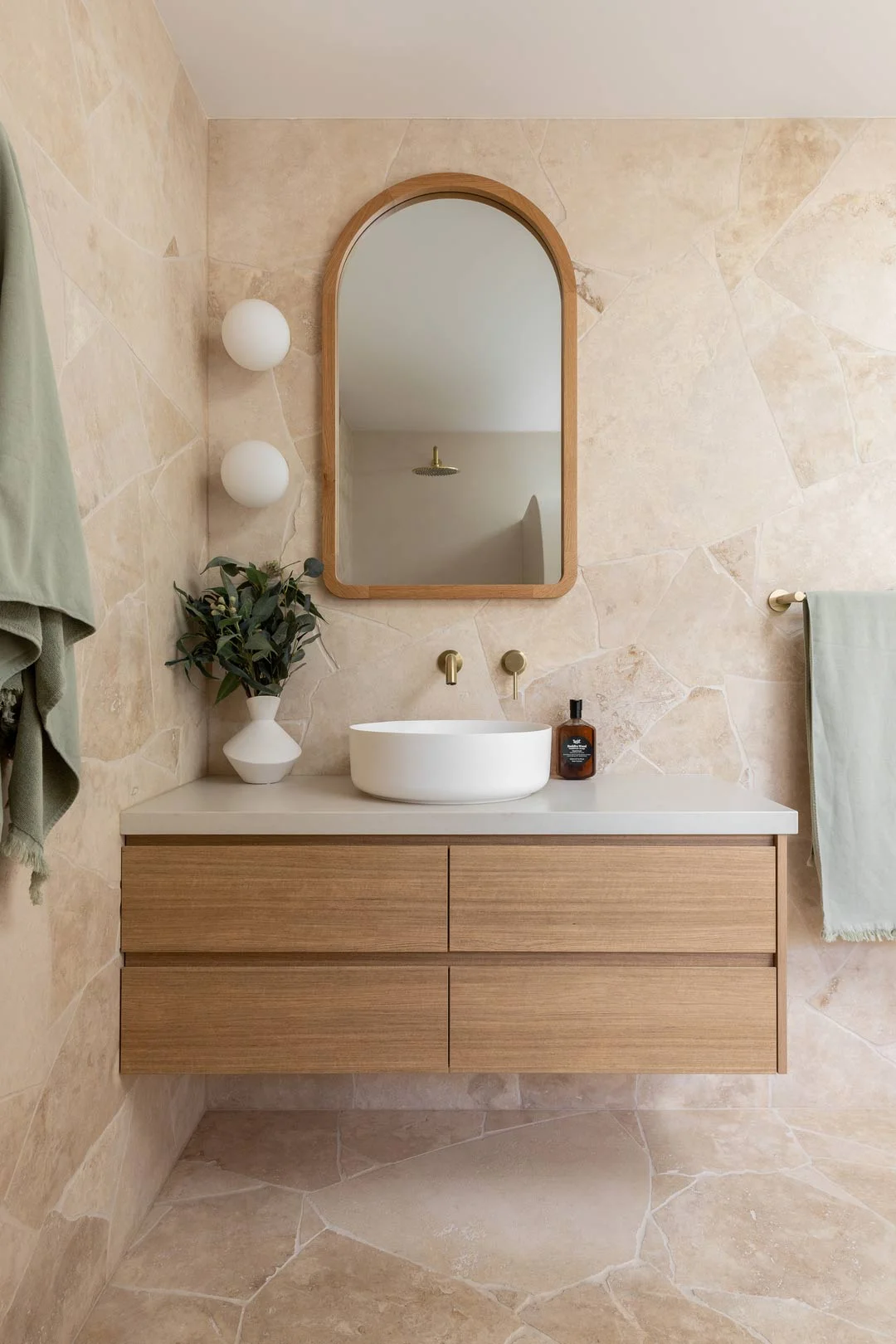
If you’re considering using travertine stone in your home, it’s worth familiarising yourself with the pros and cons of this natural stone before purchasing:
Pros of Travertine:
- Aesthetic appeal: Travertine offers a unique, elegant appearance with natural colour variations and textures, adding character to any space.
- Durability: Travertine is a durable natural stone that can withstand heavy foot traffic and is resistant to scratches, chips, and heat – making it suitable for indoor and outdoor use.
- Affordability: Travertine is often more budget-friendly than other popular materials like marble and granite. It’s an attractive option for those looking to achieve an elegant look without breaking the budget.
Cons of Travertine:
- Porosity: Travertine is porous and can absorb liquids, making it prone to staining if not properly maintained. It’s softer than other natural stones, which can increase the risk of scratching, etching, and other damage.
- Requires Regular Maintenance: Travertine needs to be sealed regularly to protect against staining and water damage, adding to maintenance requirements.
- Sensitivity to Acid: Travertine is a calcium-based material, so it reacts negatively to acids and is dissolved by them.
Travertine is a great choice for homeowners looking to add elegance, texture, and character to their spaces. From countertops and splashbacks to accent walls and outdoor areas, travertine can help elevate your home with its timeless charm, neutral tones, and unique finish.
For further inspiration on using travertine throughout the home, read our blogs:
Dream Home Adopting Spanish Architecture
Grèce: Co-Owner of SABO SKIRT’s Modern Mediterranean-Style House
Immerse Yourself in Nature With This Mid-Century Modern-Inspired Home Devoid of White
